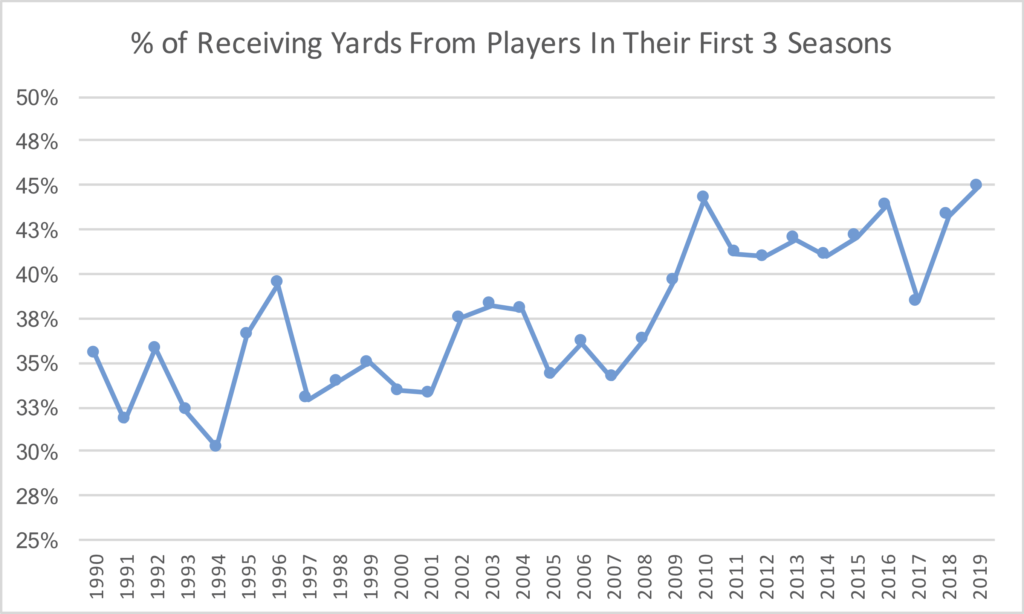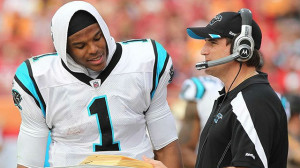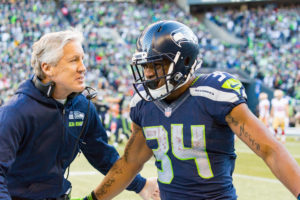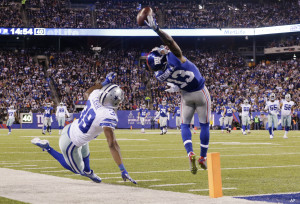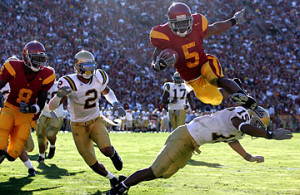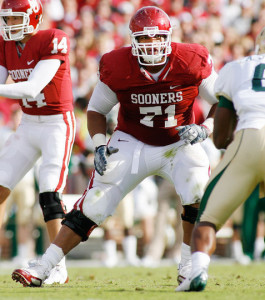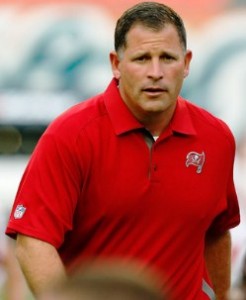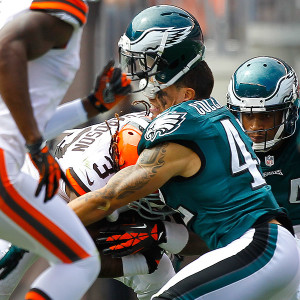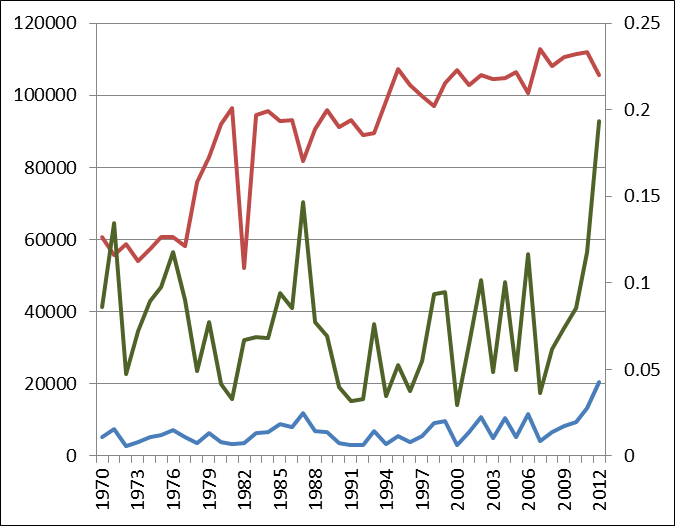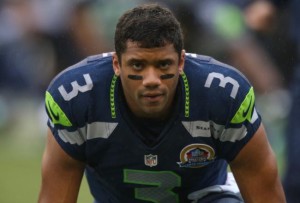Players who are in their first three years in the league are responsible for a whopping 45% of all receiving yards this season. That is a new high in the modern era, and since the new CBA was signed in 2011, we have seen a trend of younger players being responsible for more receiving yards.
In December 2008, I wrote about the wonderful rookie seasons that Matt Ryan and, to a lesser extent, Joe Flacco, were having. I concluded that Ryan might very well finish with the greatest rookie season of all time. The only two rookie seasons (excluding “rookie” seasons that did not come immediately following the player’s final collegiate season) that came close since the merger were Dan Marino in 1984 and Ben Roethlisberger in 2004, and Ryan had them both beat on quantity (Marino started just 9 games, while Roethlisberger played for the most run-heavy team in the league).
Then, 2012 happened, when Russell Wilson, Andrew Luck, and RG3 all had great rookie seasons. Luck took a team from 2-14 to 11-5, set a rookie record for passing yards that still stands, and led the NFL with seven game-winning drives. He also was arguably the least-impressive of the trio. Griffin led the NFL in yards per attempt and in yards per carry. Wait just re-read that sentence again and let it sink in how remarkable that is. And then there was Wilson, who posted a 100.0 passer rating, led Seattle to an 11-5 record, and set a still-standing rookie record with 30 touchdowns.
In 2016, Dak Prescott basically out-Ryan’ed Ryan. His team went 13-3, Prescott set a rookie record with a 104.9 passer rating and 7.86 ANY/A. He had a 23/4 TD/INT ratio while also ranking 4th in NY/A.
And then last season, Deshaun Watson took the league by storm over seven games. Yes, it was only 7 games, but he produced 21 touchdowns and averaged 8.3 yards per attempt and a 103.0 passer rating. He also averaged 7.5 yards per carry and was certainly gearing up to be in the discussion for greatest rookie seasons in quarterback history.
Only two teammates have ever won the AP Offensive Rookie of the Year and AP Defensive Rookie of the Year awards. That happened 50 years ago in 1967, when the Detroit selected RB Mel Farr with the 7th pick in the first round of the draft and future HOF CB Lem Barney with the 34th overall pick in the second round. As a rookie, Farr gained 1,177 yards from scrimmage in 13 games, 7th most in the NFL. Barney, meanwhile, led the NFL in interceptions, interception return yards, and interception return touchdowns, with a 10-232-3 stat line. Both made the Pro Bowl, and Barney was a 2nd-team All-Pro choice by both the NEA and NYDN.
This year’s Saints have a similar story. New Orleans went cornerback first and running back second, drafting RB Alvin Kamara with the 67th pick (3rd pick in the 3rd round) and CB Marshon Lattimore with the 11th overall selection (Utah S Marcus Williams was the second round pick). Kamara has been remarkable with 1,426 yards from scrimmage (8th in the NFL) and 12 touchdowns (tied for 3rd) in 15 games, while averaging a remarkable 6.2 yards per carry and 9.9 yards per reception. Either Kamara or Kareem Hunt will win the AP OROY award this year. Meanwhile, Lattimore has been a huge part of the Saints defensive revival: he’s a frontrunner for the AP DROY award, and is tied for 5th in the league with five interceptions, including one returned for a touchdown.
The final AV numbers from Pro-Football-Reference aren’t in yet, but since the Saints offensive and defensive numbers are both outstanding this year, and both Kamara and Lattimore made the Pro Bowl, I think it’s safe to assume that both will have at least 10 points of AV. [continue reading…]
Mike Anderson was the 189th pick in the NFL Draft, and one of the most unlikely rookie of the year winners ever. He played at Utah in ’98 and ’99, not getting there until four years in the United States Marine Corps and two years at junior college. On the other hand, Anderson’s success wasn’t entirely shocking: perhaps the biggest hurdle to his success was just becoming the team’s starting running back. From ’96 to ’00, Denver’s top running back averaged over 90 rushing yards per game in each season; the Broncos were responsible for 5 of the 21 instances when a rusher hit that mark while playing in at least 12 games.
Last year, Dak Prescott (the 135th pick) became another extremely unlikely rookie of the year winner. He helped turn around a Cowboys passing attack that was the worst in the NFL the prior year. Of course, there was quite an impressive infrastructure in place there, too: in 2014, the Cowboys passing game was great, too.
In 1974, Don Woods took the league by storm in 1974, despite being the 134th pick in the draft. A star quarterback at New Mexico, like most black quarterbacks of his time, he was converted to another position upon reaching the pros. Woods was cut by the Packers, but signed with the Chargers (who already had a pretty good quarterback on the roster). In the final 11 games of the season, Woods averaged over 100 yards from scrimmage and scored 10 touchdowns, while averaging 5.1 yards per carry.
In 1975, RB Mike Thomas was the 108th pick to the Redskins. Thomas totaled 1,402 yards in 14 games, and found himself in the company of the game’s top running backs by topping 75 yards in 12 of 14 games.
The graph below shows where the AP Offensive Rookie of the Year was selected in each season: [continue reading…]
The next day, unproven rookie Cameron Jerrell Newton signed a completely fair 4-year, $22M contract, with a team option for a fifth year at a cost-controlled rate. No really, it was completely fair, at least according to Pro Football Talk: [continue reading…]
Nobody wants to be compared to Ryan Leaf, so it tells you all you need to know about Jared Goff‘s rookie season that such a headline doubles as a legitimate question. Let’s start with the raw stats, even though we know the passing environment has changed significantly since 1998:
| Passing | Rushing | ||||||||||||||||||||||
|---|---|---|---|---|---|---|---|---|---|---|---|---|---|---|---|---|---|---|---|---|---|---|---|
| Rk | Player | Year | G | QBrec | Cmp | Att | Cmp% | Yds | TD | Rate | Lng | Int | Sk | Yds | Y/A | AY/A | NY/A | ANY/A | Att | Yds | TD | Y/A | Lng |
| 1 | Jared Goff | 2016 | 8 | 0-7-0 | 112 | 205 | 54.6 | 1089 | 5 | 63.6 | 66 | 7 | 26 | 222 | 5.3 | 4.26 | 3.75 | 2.82 | 8 | 16 | 1 | 2.0 | 6 |
| 2 | Ryan Leaf | 1998 | 10 | 3-6-0 | 111 | 245 | 45.3 | 1289 | 2 | 39.0 | 67 | 15 | 22 | 140 | 5.3 | 2.67 | 4.30 | 1.93 | 27 | 80 | 0 | 3.0 | 20 |
Provided by Pro-Football-Reference.com: View Original Table
Today at 538: a look at how Ezekiel Elliott and Dak Prescott are powering the Cowboys offense.
The Cowboys’ strong running game has made life easy on the rest of the team: Dallas ranks second in the NFL in time of possession, and the defense is facing just 9.6 drives per game, the fewest in the NFL. That makes life simple for the rookie quarterback, too. Dak Prescott has attempted just 34 passes while trailing in the second half of games this year, and none when trailing by more than four points.
You can read the full article here.
Colleges are not running pro-style offenses, leaving college quarterbacks not ready for the pros, they say.
New rules under the collective bargaining agreement limit practice time, making it harder for rookies to adjust to the NFL, they say.
No one told Jimmy Garoppolo, Carson Wentz, Dak Prescott, Trevor Siemian, Jacoby Brissett, or Cody Kessler, I guess. Those are the six quarterbacks this year whose first NFL start came this year. Collectively, that group has started 13 games this season, and have completed 275 of 415 passes (66.3%) for 3,227 yards. Most impressively, they have thrown for 15 TDs (while running for three more) against just 3 INTs, with 21 sacks, and 112 sack yards. That translates to a 7.52 ANY/A.
Meanwhile, among starting QBs in 2016 who started a game before this year, they are 1913 for 2057 (62.6%), for 22,223 yards, with 122 TDs and 79 INTs, 183 sacks, 1171 sack yards lost. That’s a 6.15 ANY/A average. [continue reading…]
Today at 538: Putting into context the fact that Dak Prescott, the 135th pick in the 2016 NFL Draft, is going to be the Cowboys starting quarterback in week 1. And that Trevor Siemian, a 7th round pick last year who has never seen meaningful action in an NFL game, is going to be the Broncos starter.
This is rarely charted territory in modern history: In the last 30 years, only three rookie quarterbacks drafted outside of the top 100 picks started their team’s season opener: Orton, Chris Weinke in 2001 and Steve Beuerlein in 1988.1 You have to go all the way back to 1977 to find a quarterback not selected in the first 130 picks of the NFL draft who then went on start his team’s season opener as a rookie.
You can view the full article https://fivethirtyeight.com/features/dak-prescott-is-not-your-average-week-1-starting-quarterback/.
Thomas Rawls had an incredible rookie season. He was the only player, rookie or veteran, with two games with at least 160 rushing yards in 2015. His heat map was otherworldly, with the highlight being that an astounding 10% of his runs went for at least 15+ yards. And he led the league in yards per carry, as Rawls averaged 5.65 yards per carry while rushing for 830 yards. Rawls ranked 1st in DYAR, 1st in Success Rate, and 2nd in DVOA according to Football Outsiders.
In the historical context, Rawls also stands out. The table below shows all rookies since 1970 with at least 700 rushing yards and 5.00 yards per carry: there are only 18 of those players, and Rawls has the second highest YPC average in the group: [continue reading…]
I’ve got no time today, so just a fun checkdown. Here is a look at the franchise record-holders in rookie receiving yards.
| Team | Receiver | Year | Yards |
|---|---|---|---|
| Oakland Raiders | Amari Cooper | 2015 | 1070 |
| Carolina Panthers | Kelvin Benjamin | 2014 | 1008 |
| Buffalo Bills | Sammy Watkins | 2014 | 982 |
| New York Giants | Odell Beckham | 2014 | 1305 |
| San Diego Chargers | Keenan Allen | 2013 | 1046 |
| Jacksonville Jaguars | Justin Blackmon | 2012 | 865 |
| Cincinnati Bengals | A.J. Green | 2011 | 1057 |
| Atlanta Falcons | Julio Jones | 2011 | 959 |
| Baltimore Ravens | Torrey Smith | 2011 | 841 |
| Denver Broncos | Eddie Royal | 2008 | 980 |
| Philadelphia Eagles | DeSean Jackson | 2008 | 912 |
| Kansas City Chiefs | Dwayne Bowe | 2007 | 995 |
| New Orleans Saints | Marques Colston | 2006 | 1038 |
| Detroit Lions | Roy Williams | 2004 | 817 |
| Tampa Bay Buccaneers | Michael Clayton | 2004 | 1193 |
| Arizona Cardinals | Anquan Boldin | 2003 | 1377 |
| Houston Texans | Andre Johnson | 2003 | 976 |
| Miami Dolphins | Chris Chambers | 2001 | 883 |
| Cleveland Browns | Kevin Johnson | 1999 | 986 |
| Minnesota Vikings | Randy Moss | 1998 | 1313 |
| New England Patriots | Terry Glenn | 1996 | 1132 |
| New York Jets | Keyshawn Johnson | 1996 | 844 |
| St. Louis Rams | Eddie Kennison | 1996 | 924 |
| Seattle Seahawks | Joey Galloway | 1995 | 1039 |
| Indianapolis Colts | Bill Brooks | 1986 | 1131 |
| Washington Redskins | Gary Clark | 1985 | 926 |
| San Francisco 49ers | Jerry Rice | 1985 | 927 |
| Dallas Cowboys | Bob Hayes | 1965 | 1003 |
| Tennessee Titans | Bill Groman | 1960 | 1473 |
| Pittsburgh Steelers | Jimmy Orr | 1958 | 910 |
| Chicago Bears | Harlon Hill | 1954 | 1124 |
| Green Bay Packers | Billy Howton | 1952 | 1231 |
Please leave your thoughts in the comments.
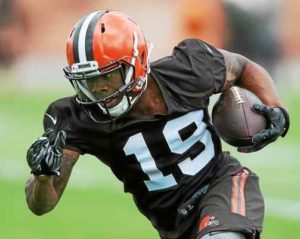 The Browns wide receiver depth chart is really, really thin. As a result, Cleveland attacked the wide receiver position in the Draft, starting with Baylor Bear Corey Coleman at 15, making him the first wide receiver taken. The Browns followed that up with Auburn’s Ricardo Louis in the fourth round, and UCLA’s Jordan Payton and Colorado State’s Rashard Higgins in the fifth round. The veterans on the depth chart? There’s only Andrew Hawkins, Taylor Gabriel, Marlon Moore, and Terrelle Pryor (who has made a position switch from quarterback) remaining, after the team released Brian Hartline in late May.
The Browns wide receiver depth chart is really, really thin. As a result, Cleveland attacked the wide receiver position in the Draft, starting with Baylor Bear Corey Coleman at 15, making him the first wide receiver taken. The Browns followed that up with Auburn’s Ricardo Louis in the fourth round, and UCLA’s Jordan Payton and Colorado State’s Rashard Higgins in the fifth round. The veterans on the depth chart? There’s only Andrew Hawkins, Taylor Gabriel, Marlon Moore, and Terrelle Pryor (who has made a position switch from quarterback) remaining, after the team released Brian Hartline in late May.
Last year, the Browns threw 609 passes (ignoring sacks), the 11th most in the NFL. If you expect Cleveland to be bad again this year — which just about everybody does — that number may only go up. In 2013, Cleveland threw 679 times, as Josh Gordon and Jordan Cameron had breakout years. [1]In between, the Browns went 7-9 with an excellent pass defense that kept the team in games; I am not expecting that to happen again. Gordon is a key variable here, of course: his status for the 2016 season remains up in limbo and is in the commissioner’s discretion. [continue reading…]
References
| ↑1 | In between, the Browns went 7-9 with an excellent pass defense that kept the team in games; I am not expecting that to happen again. |
|---|
Brian Malone, a writer for dynastyleaguefootball.com, has put together a great guest post today. You can follow him on Twitter at @BrianMaloneFF. Thanks to Brian for today’s article!
Testing the Tape
Projecting a player’s NFL potential from his college football performance is something like predicting a player’s potential as a tennis pro from his performance in the collegiate racquetball club. Sure, there’s correlation, but the variance in level of competition and style of play create ample noise. No wonder folks on Twitter spend hours debating hand size: at least it’s a standardized measure, and it’s not obviously worse than things like collegiate yards per carry.
The better approach is film study. Unfortunately, I’m not any good at it. Indeed, I don’t even know how to tell whether anyone else is any good at it. But that’s a problem we can attack. And the natural starting point is Matt Waldman’s Rookie Scouting Portfolio (RSP), which has the benefits of quantified observations, independent analysis, and a 10-year history.
The RSP includes a checklist of observed skills and abilities, including things like “Runs behind pads/Good pad level” and “Catches ball with proper hands technique.” The RSP assigns a weight to each and combines them into what I’ll call trait scores (i.e., “Power” and “Balance”) and an overall score.
Note the three steps to this process: (1) observing the skills and abilities; (2) assessing the importance of observed skills and abilities to each trait; and (3) assessing the importance of each trait to a player’s overall ability. The first step is off limits: we’ll take the observations as given. But the others are fair game: we have the tools to use Waldman’s observations, plus a little math, to build a traits-based model for predicting a prospect’s success. [continue reading…]
Yesterday, we looked at how often the AP Offensive Rookie of the Year lead his draft class in AV; today, we do the same but for defensive rookies. [1]Since no undrafted player has ever won Offensive or Defensive Rookie of the Year, I have limited this analysis to only drafted players for administrative convenience.
This season, Kansas City cornerback Marcus Peters ran away with the award, taking 45 of 50 votes (Buffalo cornerback Ronald Darby (4) and Jets defensive end/tackle Leonard Williams (1) had the remaining votes). Now, how often does the AP Defensive Rookie of the Year wind up leading his draft class in AV? We saw that yesterday, 9 of the first 40 AP OROY wound up being the career leader from their class in offensive AV. On the defensive side, the results were even grimmer: just six of the first 40 AP DROY winners led their draft class in AV: Jack Lambert, Mike Haynes, Lawrence Taylor, Charles Woodson, Brian Urlacher, and Julius Peppers. [continue reading…]
References
| ↑1 | Since no undrafted player has ever won Offensive or Defensive Rookie of the Year, I have limited this analysis to only drafted players for administrative convenience. |
|---|
In 2015, Rams running back Todd Gurley was named the Associated Press Offensive Rookie of the Year. Gurley received 27 of 50 votes, edging out Bucs quarterback Jameis Winston (17). Amari Cooper (Oakland) had 4 votes, while Tyler Lockett (Seattle) and David Johnson (Arizona) each received 1 vote.
From 1967 to 2006, nine of the 40 Offensive Rookie of the Years wound up leading their draft class in AV. [1]Since no undrafted player has ever won Offensive or Defensive Rookie of the Year, I have limited this analysis to only drafted players for administrative convenience. And all nine of those players were running backs: Franco Harris, Tony Dorsett, Marcus Allen, Barry Sanders, Emmitt Smith, Marshall Faulk, Curtis Martin, Edgerrin James, and Clinton Portis.
The table below shows every AP Offensive Rookie of the Year, along with the career leader in AV from that draft. Here’s how to read it, using 2000 as an example. 2005 as an example. That year, Cadillac Williams was the AP OROY, and had 8 points of AV as a rookie. He finished his career with 26 points of AV, while the career leader in offensive AV from the 2005 Draft is Aaron Rodgers, who has 112 points of career AV.
What sticks out to you?
References
| ↑1 | Since no undrafted player has ever won Offensive or Defensive Rookie of the Year, I have limited this analysis to only drafted players for administrative convenience. |
|---|
Today at the New York Times, a look at the impressive rookie seasons from the top quarterbacks in the 2015 Draft.
In the 2015 N.F.L. Draft, the Tampa Bay Buccaneers and the Tennessee Titans owned the top two picks. The teams selected Jameis Winston and Marcus Mariota, making them just the sixth pair of quarterbacks to be selected one-two since 1970. Each player is having an excellent season by rookie quarterback standards, and both showed their long-term potential in exciting wins on Sunday.
Mariota has thrown for 19 touchdowns in 10 games and has a 95.1 passer rating this year; both marks are among the best in N.F.L. history for a rookie. Against the Jaguars, he threw for 268 yards and three touchdowns on just 29 passes, his fourth game with at least three touchdown passes. He also ran for an 81-yard touchdown, the third longest touchdown run by any quarterback in N.F.L. history. In addition, Mariota joined Randall Cunningham and Michael Vick as the only players since 1960 with three passing touchdowns and 100 rushing yards in the same game.
You can read the full article here.
If we exclude the Walter Payton Man of the Year, the Super Bowl MVP, and Comeback Player of the Year awards, [1]For those curious, Tedy Bruschi, Greg Ellis, Doug Flutie, Tommy Kramer, Jim McMahon, Joe Montana, Jim Plunkett, and Michael Vick have all won that award despite missing games — or, perhaps in … Continue reading my database identifies six players who have won an award despite missing at least three games. [2]This excludes the 1987, when just about every player missed three games due to the players’ strike. Four of them won the defensive rookie of the year award, while the other two were quarterbacks. In reverse chronological order… [continue reading…]
References
| ↑1 | For those curious, Tedy Bruschi, Greg Ellis, Doug Flutie, Tommy Kramer, Jim McMahon, Joe Montana, Jim Plunkett, and Michael Vick have all won that award despite missing games — or, perhaps in some cases, because of missing those games. |
|---|---|
| ↑2 | This excludes the 1987, when just about every player missed three games due to the players’ strike. |
Odell Beckham is ridiculous. Period.
Mike Evans, in just about any other year, would be considered the best rookie wide receiver in the NFL. Players like Kelvin Benjamin and Sammy Watkins would stand out in most years, too: both have over 25% of their team’s receiving yards.
Jordan Matthews has 767 receiving yards, which is only considered unimpressive against when compared against the above backdrop. Ditto Jarvis Landry and his 79 receptions. Martavis Bryant has seven touchdowns. The Jaguars have three rookie receivers playing well. And on and on we could go (just as I did in late October, and as Bill Barnwell did after week twelve).
Through 16 weeks of the 2014 season, rookies have been responsible for 12.6% of all receptions in the NFL, 12.7% of all receiving yards, and 13.7% of all touchdowns. As it turns out, that does make the 2014 class a very special one. The table below shows the percentage of all receptions, receiving yards, and receiving touchdowns by rookies in each year (other than 1987) since 1970: [continue reading…]
Jets second-year quarterback Geno Smith has averaged 3.88 Adjusted Net Yards per Attempt this year, which has resulted in him being benched for Michael Vick. That 3.88 ANY/A average is the worst of the 34 qualifying quarterbacks this season. In fact, only three other quarterbacks have averaged fewer than five Adjusted Net Yards per Attempt this year: Derek Carr (4.93), Teddy Bridgewater (4.75), and Blake Bortles (4.16). Those three, along with Johnny Manziel, were selected in the top 40 of the 2014 Draft. Since Manziel has been on the bench most of the season, and Zach Mettenberger does not yet have enough attempts to qualify, this means the only three rookie quarterbacks in the NFL this season have been terrible. With a capital T.
Which maybe isn’t too surprising. But it is a bit different. In 2008, Matt Ryan and Joe Flacco played well as rookies, with Ryan posting outstanding numbers and Flacco making it to the AFC Championship Game. In 2009, Mark Sanchez made it to the AFC Championship Game, too. In 2010, Sam Bradford set some volume-based passing records, and helped St. Louis go from 1-15 to 7-9. In 2011, Cam Newton and Andy Dalton had varying degrees of success, and generally exceeded expectations. [continue reading…]
Neil Paine showed some interesting evidence relating to this idea on Friday. Looking at team performance since 2009 for teams with new quarterbacks, Neil showed that preseason passing efficiency helps predict regular season passing efficiency. It’s important to note that part of this result may have been pretty predictable even before we watched those preseason games. The 2012 Redskins replaced Rex Grossman and John Beck with the #2 pick in the draft who would have been #1 in an average year. So we would expect a big improvement to come just by way of moving from Grossman to a healthy RGIII. [continue reading…]
Some teams, like the Rams have done a good job of fielding a very young roster; others, like the Raiders, have made a conscious effort to head in the other direction. Overall, the Rams are more representative of the current trend. NFL teams have made a shift towards younger players in the last three years, although you might be surprised by just how dramatic and sudden the change has been. The drop in Approximate Value (AV)-weighted ages of NFL rosters in the last three years is more than 50% larger than in any other three-year period in NFL history.

Looking at the graph, there are two seismic shifts that changed the age distribution of the NFL in the Super Bowl era: the increase that started in the late ‘80s and the decrease in the last five years. These changes tell us about how changes in the collective bargaining agreement can change the NFL landscape in both subtle and dramatic ways.
First, the increase in NFL roster age in the 1980s coincides pretty closely with the introduction of Plan B free agency in 1989. It looks like the increase maybe starts a year too early. Remember, though, that the 1987 age may be skewed a bit by the three games with replacement players. Taking that point in mind, the increase from 1988 through 1993 coincides exactly with the introduction of limited free agency. [continue reading…]
Today, I look at running backs drafted since 1984. I use a slightly different way of looking at the data that I think is a little better. I also revisit the QBs and WR/TEs with that method. Instead of considering the number of first-round college teammates that a player has, I consider the total draft value of college teammates at different positions, as determined by Chase’s chart. [1]I thank commenter Stuart for suggesting this approach in the comments to last week’s post. Going this way makes it possible to look at the entire offensive line’s value, for example, rather than just the number of players who were high picks.
For example, according to PFR’s Approximate Value (AV), Ki-Jana Carter is the biggest underachiever at RB relative to his draft position (since 1984). After being drafted #1 in 1995, he generated just nine points of AV in his first five years. [2]Carter averaged 3.3 yards on 227 carries over his first five injury-plagued seasons. Carter also had a lot of help from his friends in college. He ranks 10th out of 104 RBs picked in the top 32 in terms of the total value of his college offensive linemen according to my measure. His tight end also went in the top ten in 2005; Carter would be 2nd in total line value if we included TEs. Two of his offensive lineman went in the first round in the following year. Two Penn State fullbacks were drafted that year, too. [3]Two Penn State halfbacks were drafted in 1996, as well. One of them was Stephen Michael Pitts, who went to Middletown High School South (NJ), a school that also graduated Knowshon Moreno and, only … Continue reading Could Carter have looked better than he was because he ran behind those great college blockers? Or is the NFL success of the running back who ranks fourth in terms of offensive line help (Warrick Dunn) more representative of RBs, in general?
In addition to looking at the offensive line, I’ll consider whether the total value of college teammates at other offensive positions predicts that running backs become overvalued in the draft. While we might think that RBs are particularly dependent on line help, it actually appears that having a great QB is again the one clear predictor for players being overvalued. [continue reading…]
References
| ↑1 | I thank commenter Stuart for suggesting this approach in the comments to last week’s post. |
|---|---|
| ↑2 | Carter averaged 3.3 yards on 227 carries over his first five injury-plagued seasons. |
| ↑3 | Two Penn State halfbacks were drafted in 1996, as well. One of them was Stephen Michael Pitts, who went to Middletown High School South (NJ), a school that also graduated Knowshon Moreno and, only slightly less famously, me. |
The first round quarterback with the closest comparable surrounding college talent — a left-handed former Florida QB drafted in 2010 — doesn’t appear to be a very promising comparison. Tim Tebow’s top wide receiver was drafted 22nd overall (Percy Harvin) in 2009, and successive linemen Pouncey brothers were drafted in the top 20 the next two years (Maurkice went #18 in 2010 and Mike #15 in 2011). [1]And he had a talented tight end go in the fourth round in 2010, too. Like Tebow, he is also no longer playing football. Let’s move on. Tebow is obviously very different from Manziel, most notably in lacking the important skill for a quarterback of being able to throw a football well. But Tebow may have looked better as a college player in part because of the great talent around him, a situation which may be similar to Manziel.
In general, does having better college teammates cause QBs like Manziel to be overvalued in the draft? Or, do better QBs cause their college teammates to be overdrafted? To check these ideas out, I compared how draft picks performed in their first five years (according to PFR’s Approximate Value) relative to their expected value given their draft position. [2]I did this by running a regression of a player’s value in the first five years on a fifth-order polynomial in draft position. This is pretty much the same thing as looking at the value a player … Continue reading I then compared performance relative to expectation for players who had the benefit of teammates who were drafted in the first round to those who weren’t so lucky. The results are certainly not what I expected: by the end of this post, it might be Bucs fans who worry the most that they overvalued a high pick in the 2014 draft.
Quarterbacks
I first considered the value above expectation (VAE) for quarterbacks drafted in the first three rounds since 1984. It looks like having a lineman drafted in the first round either in the same or subsequent draft has no clear impact on the QB’s VAE. Those QBs who played with first-round linemen do about 1.8 points worse in VAE than QBs (relative to a baseline of 22.2), but this difference isn’t close to being distinguishable from zero. [3]The p-value is 0.70
Here’s the list of QBs from the first three rounds who had at least one lineman drafted in the first round of the same or subsequent draft. [4]All analysis in this post ignores the supplemental draft. The VAE for the last few entries is missing because those players have not finished their first five seasons. Keep in mind that the VAEs cannot be too low for third-round picks like Bobby Hoying, since little was expected of them given their draft position.
| Quarterback | Year | VAE | School | OL |
|---|---|---|---|---|
| Boomer Esiason | 1984 | 41.3 | Maryland | Ron Solt |
| Chuck Long | 1986 | -18.7 | Iowa | Mike Haight |
| Todd Marinovich | 1991 | -21.2 | USC | Pat Harlow |
| Matt Blundin | 1992 | -19.2 | Virginia | Ray Roberts |
| Billy Joe Hobert | 1993 | -8.4 | Washington | Lincoln Kennedy |
| Rick Mirer | 1993 | -5.8 | Notre Dame | Aaron Taylor |
| Kerry Collins | 1995 | -6.8 | Penn St. | Jeff Hartings; Andre Johnson |
| Todd Collins | 1995 | -10 | Michigan | Trezelle Jenkins |
| Bobby Hoying | 1996 | -9.6 | Ohio St. | Orlando Pace |
| Charlie Batch | 1998 | 14.9 | East. Michigan | L.J. Shelton |
| Eli Manning | 2004 | 9.5 | Mississippi | Chris Spencer |
| Brian Brohm | 2008 | -15.7 | Louisville | Eric Wood |
| Chad Henne | 2008 | 6.4 | Michigan | Jake Long |
| Matt Ryan | 2008 | 37.9 | Boston Col. | Gosder Cherilus |
| Sam Bradford | 2010 | 0 | Oklahoma | Trent Williams |
| Tim Tebow | 2010 | 0 | Florida | Maurkice Pouncey; Mike Pouncey |
| Andrew Luck | 2012 | 0 | Stanford | David DeCastro |
| Ryan Tannehill | 2012 | 0 | Texas A&M | Luke Joeckel |
| Russell Wilson | 2012 | 0 | Wisconsin | Kevin Zeitler; Travis Frederick |
There are definitely some classic failures on this list, notably Todd Marinovich, but there are some big successes, too. And, for the more recent QBs, Andrew Luck and Russell Wilson will more than balance out Tebow. Overall, there’s little reason to think getting to play with a first-round lineman causes QBs to be overdrafted in general. As a result, Manziel critics may not have much support if they want to point to Matthews and Joeckel as the reason for Manziel’s college success.
But what about the presence of Mike Evans? Does having an elite wide receiver or tight end mean that a QB might be overvalued in the draft? I ran a separate regression looking at whether having a first-round WR/TE predicts a QB to succeed or flop relative to his expectation. Here, there’s more reason to think there might be something going on, but there is still not clear evidence that teammates make the QB. Part of this is just the relatively small number of QBs with first-round WR/TEs in the sample. On average, QBs with first-round WR/TE teammates in college do 6.5 points worse relative to expectation than other QBs. That gap is still indistinguishable from zero, however. [5]p = .20
Below are the QBs since 1984 who had at least one WR/TE teammate in the same or following year drafted in the first round.
| Quarterback | Year | VAE | School | WR/TE |
|---|---|---|---|---|
| Vinny Testaverde | 1987 | -4.5 | Miami (FL) | Michael Irvin |
| Tony Sacca | 1992 | -17.7 | Penn St. | O.J. McDuffie |
| Rick Mirer | 1993 | -5.8 | Notre Dame | Irv Smith |
| Kerry Collins | 1995 | -6.8 | Penn St. | Kyle Brady |
| Kordell Stewart | 1995 | 19.9 | Colorado | Michael Westbrook |
| Bobby Hoying | 1996 | -9.6 | Ohio St. | Terry Glenn; Rickey Dudley |
| Peyton Manning | 1998 | 40.5 | Tennessee | Marcus Nash |
| Marques Tuiasosopo | 2001 | -14.2 | Washington | Jerramy Stevens |
| Chris Simms | 2003 | -2.3 | Texas | Roy Williams |
| Matt Schaub | 2004 | 10.9 | Virginia | Heath Miller |
| JaMarcus Russell | 2007 | -30.5 | LSU | Dwayne Bowe; Craig Davis |
| Sam Bradford | 2010 | 0 | Oklahoma | Jermaine Gresham |
| Brandon Weeden | 2012 | 0 | Oklahoma St. | Justin Blackmon |
| Robert Griffin | 2012 | 0 | Baylor | Kendall Wright |
| Geno Smith | 2013 | 0 | West Virginia | Tavon Austin |
The repeats from the earlier list who were blessed with great help both on the line and at WR/TE were Rick Mirer, Kerry Collins and Sam Bradford. [6]All of those first-rounders were actually TEs (Irv Smith, Kyle Brady and Jermaine Gresham, respectively), although Collins also threw to a second-round WR in Bobby Engram. As you can see, Peyton Manning swings this upwards, but JaMarcus Russell swings it down just as much. Both of those would seem to be anecdotes that fit the story of teammates potentially inflating another player’s perceived value, with the QB inflating the WR (the instantly forgotten Marcus Nash) in Manning’s case and the WR (Dwayne Bowe) perhaps inflating the QB in Russell’s case.
Overall, though, it’s unclear whether WRs in general tend to inflate their QBs, making them overvalued in the draft. The effect size is substantial and just three of the 11 QBs have positive VAE, but it could be driven by random chance given the small sample size. [7]Kordell Stewart is one of those three and he did play a little WR in his first few years, too, but almost all of his value was at QB Given what I find below for predicting WR success, I suspect that the Manning-Nash example may happen more often than the Russell-Bowe situation.
Wide Receivers
Do great college quarterbacks cause NFL talent evaluators to reach for their wide receiver and tight end teammates? It seems like the answer to this question might be yes. Receivers selected in rounds 1-3 who come from schools with first-round QBs drafted the same or following year do 6.4 points worse relative to expectation from their draft position. Here, we have more data and the results are statistically significant that having a first-round college QB has led to their wide receivers being overvalued in the draft. [8]The p-value for this effect is .01 WRs drafted in the first three rounds without a top QB generated an average value in their first five years of 17.6, so the predicted drop in value is down to about 11.2. Having a first round QB thus predicts a WR gets taken a little more than a round too early. [9]For wide receivers, I estimate 17.6 as being the expected value generated by about the 46th pick, with 11.2 the expected value generated by the 89th pick
In fact, from 1984 to 2009, only 20% of the round 1-3 WR/TEs who played with first-round QBs had a positive VAE.
And at least one of the successes on this list is an exception that fits the broader idea. Percy Harvin played with a QB who just maybe was a slight reach as a first round pick. It’s hard to think that Tim Tebow made Percy Harvin look good. [10]I’d argue the same for Dwayne Bowe and JaMarcus Russell, but Russell at least was a legitimately excellent passer in 2006 At least based on these results, having a great college QB has caused wide receivers to be drafted much too highly over the last thirty years.
Conclusion
So it seems like Bucs fans might have more to worry about than Browns fans. The evidence is unclear on whether QBs such as Manziel generally become overvalued from playing with first-round receiver talent, although there might be something going on there. But the evidence is much clearer that WRs such as Evans become overvalued from playing with premier college QBs. Perhaps it’s not surprising from what we know about the NFL that there’s a pretty good chance that Manziel’s excellence helped inflate Evans’s value.
Of course, the last example of a 6’5 receiver drafted in the top ten who played with a first-round Heisman-winning QB doesn’t bode well for Evans, either. [11]The similarities don’t stop there. Mike Williams is listed at 229 lbs and ran a 4.56 40 at the combine. Evans is at 231 and ran a 4.53. And they’re both named Mike. And while Evans will likely still be in the NFL after six years unlike Mike Williams, it is likely that he would have gone lower in the draft if he played with a quarterback not quite so good as Johnny Football.
References
| ↑1 | And he had a talented tight end go in the fourth round in 2010, too. Like Tebow, he is also no longer playing football. Let’s move on. |
|---|---|
| ↑2 | I did this by running a regression of a player’s value in the first five years on a fifth-order polynomial in draft position. This is pretty much the same thing as looking at the value a player generates compared to their expected value according to Chase’s chart, except I also control for whether a player went to a major football school. |
| ↑3 | The p-value is 0.70 |
| ↑4 | All analysis in this post ignores the supplemental draft. |
| ↑5 | p = .20 |
| ↑6 | All of those first-rounders were actually TEs (Irv Smith, Kyle Brady and Jermaine Gresham, respectively), although Collins also threw to a second-round WR in Bobby Engram. |
| ↑7 | Kordell Stewart is one of those three and he did play a little WR in his first few years, too, but almost all of his value was at QB |
| ↑8 | The p-value for this effect is .01 |
| ↑9 | For wide receivers, I estimate 17.6 as being the expected value generated by about the 46th pick, with 11.2 the expected value generated by the 89th pick |
| ↑10 | I’d argue the same for Dwayne Bowe and JaMarcus Russell, but Russell at least was a legitimately excellent passer in 2006 |
| ↑11 | The similarities don’t stop there. Mike Williams is listed at 229 lbs and ran a 4.56 40 at the combine. Evans is at 231 and ran a 4.53. And they’re both named Mike. |
Vincent Jackson is a star, but he’s dealing with injuries to his ribs. On 30 passes aimed at Jackson this year, Freeman has picked up 265 yards, an average of 8.83 yards per attempt. On 23 targets to Mike Williams, Freeman has averaged 5.5 yards per pass. On his other 38 targets, Freeman’s averaged just 4.7 yards per pass. Right now, there simply aren’t enough weapons in Tampa Bay, as the Bucs desperately could use a receiving tight end and a slot receiver.
But here’s another reason not to expect much from Glennon. Since 1978, there are 30 rookie quarterbacks who are “similar” to Glennon in that they met the following three criteria:
- Were not first round picks
- Did not start in week 1 (i.e., they didn’t pull a Russell Wilson and win the job with a great training camp — they generally became the starter because the man in front of them was ineffective); and
- Started at least four games as a rookie.
Last week, I wrote about how the 2012 Redskins were powered by a pair of rookies in Robert Griffin III and Alfred Morris. The only team whose rookies had more passing/rushing/receiving yards in NFL history was the 2012 Colts, while the only non-expansion team with a higher percentage of yards from rookies was the ’55 Colts.
In the comments, Shattenjager pointed out that the list I presented was pretty quarterback-heavy. So I thought a fun thing to do would be to use PFR’s Approximate Value (AV) system instead of yards, and re-run the numbers.
The table below shows all non-expansion teams since 1950 that had at least 25% of their AV come from rookies. For each team, I’ve listed their record and winning percentage, total team AV, their rookie AV, and the percentage compiled by rookies. Then I listed their top four rookies in terms of AV.
[continue reading…]
That 6,193 figure is the second most amount of “yards” produced by a group of rookies in NFL history. The leader in the clubhouse? The 2012 Indianapolis Colts, behind Andrew Luck, Vick Ballard, T.Y. Hilton, Dwayne Allen, Coby Fleener, LaVon Brazill and Dominique Jones. The third place spot belongs to the 2012 Cleveland Browns: Brandon Weeden, Trent Richardson, Josh Gordon, Travis Benjamin, Josh Cooper, and Brad Smelley combined for over 6000 yards.
What if we instead look at percentage of team yards (defining yards as the sum of all passing, rushing, and receiving yards)? Expansion teams would begin to dominate the list — some AFL teams in 1960, the ’68 Bengals, and the ’02 Texans, for example. But what if we look at only non-expansion teams since 1950?
In that case, the 2012 Colts come in second, behind another Colts team.
[continue reading…]
- His 3.6 YPC average came on 267 carries, which represented 77% of all carries by Cleveland running backs
- He was a rookie last year
- He was a high first round pick
Since 1970, only 13 first round rookies have recorded 70% of all running back carries by their team. Two of those players were Richardson and Tampa Bay’s Doug Martin last year. Of that group, Richardson did post the lowest YPC average, but he was within 0.1 YPC of LaDainian Tomlinson. The next two lowest averages belong to Robert Edwards and Emmitt Smith; the former suffered a career-debilitating injury in a beach football game after his rookie season, while the latter ran for the most yards in NFL history.
Yeah, Richardson’s yards per carry average was well below average. But the universe of first round running backs who became workhorses right away as rookies and had a low YPC average consists of a HOF running back, a future HOF running back, and a player who suffered the flukiest of injuries. Richardson has something else in common with Emmitt Smith: after both of their rookie seasons, Norv Turner came on board as offensive coordinator.
But let’s say you don’t want to give Richardson any credit for his draft status. And you’re not in the mood to give him a pass just because he was a rookie. OK. Since 1990, 48 running backs have averaged fewer than 3.8 yards per carry while recording at least 70% of all running back carries for their team. Twenty-six of those players were at least 27 years old, and on the back half of their careers. Here are the other 22 running backs:
[continue reading…]
In the graph below, the blue line shows the number of passing yards by rookies in each year since 1970, while the red line shows the number of passing yards by non-rookies in the same season. Both are measured against the left Y-Axis; the green line shows the percentage of rookie passing yards to veteran passing yards. As you can see, Andrew Luck, Robert Griffin III, Russell Wilson, Ryan Tannehill, and Brandon Weeden were part of an extremely productive rookie class:
In the pre-season, I wrote three pieces on Cleveland Browns rookie Trent Richardson. As part of a thought experiment, I wondered who would lead the NFL in rushing yards from 2012 to 2021? I narrowed my finalists to LeSean McCoy, Beanie Wells (was I drunk?), DeMarco Murray (ouch), Richardson and the rest of the rookies, and then a few college running backs. I concluded that Richardson was the obvious frontrunner, with McCoy, Doug Martin, and Marcus Lattimore (double ouch) as the next best bets. I’m not really sure 2012 helped clarify the issue, although Martin and Alfred Morris certainly raised their chances.
Then in August, I looked at the production of the highest drafted running back in each draft class. I discovered that slightly fewer than half of the highest drafted running backs led their class [1]Note that this only includes drafted running backs. in rushing yards as a rookie; as you can see, “the field” also turned out to be a better bet than Richardson in 2012:
| Rk | Player | Year | Draft | Tm | G | Att | Yds | Y/A | TD | Y/G |
|---|---|---|---|---|---|---|---|---|---|---|
| 1 | Alfred Morris | 2012 | 6-173 | WAS | 16 | 335 | 1613 | 4.81 | 13 | 100.8 |
| 2 | Doug Martin | 2012 | 1-31 | TAM | 16 | 319 | 1454 | 4.56 | 11 | 90.9 |
| 3 | Trent Richardson | 2012 | 1-3 | CLE | 15 | 267 | 950 | 3.56 | 11 | 63.3 |
| 4 | Vick Ballard | 2012 | 5-170 | IND | 16 | 211 | 814 | 3.86 | 2 | 50.9 |
| 5 | Bryce Brown | 2012 | 7-229 | PHI | 16 | 115 | 564 | 4.9 | 4 | 35.3 |
| 6 | Bernard Pierce | 2012 | 3-84 | BAL | 16 | 108 | 532 | 4.93 | 1 | 33.3 |
| 7 | Daryl Richardson | 2012 | 7-252 | STL | 16 | 98 | 475 | 4.85 | 0 | 29.7 |
| 8 | David Wilson | 2012 | 1-32 | NYG | 16 | 71 | 358 | 5.04 | 4 | 22.4 |
| 9 | Robert Turbin | 2012 | 4-106 | SEA | 16 | 80 | 354 | 4.43 | 0 | 22.1 |
| 10 | Ronnie Hillman | 2012 | 3-67 | DEN | 14 | 84 | 327 | 3.89 | 1 | 23.4 |
| 11 | Brandon Bolden | 2012 | udfa | NWE | 10 | 56 | 274 | 4.89 | 2 | 27.4 |
| 12 | Lamar Miller | 2012 | 4-97 | MIA | 13 | 51 | 250 | 4.9 | 1 | 19.2 |
| 13 | LaMichael James | 2012 | 2-61 | SFO | 4 | 27 | 125 | 4.63 | 0 | 31.3 |
| 14 | Chris Rainey | 2012 | 5-159 | PIT | 16 | 26 | 102 | 3.92 | 2 | 6.4 |
| 15 | Jeremy Stewart | 2012 | udfa | OAK | 4 | 25 | 101 | 4.04 | 0 | 25.3 |
In that post, I also noted that the running back drafted first in his class was slightly less successful over the course of his career: only one-third of the highest-drafted running backs finished with the most career rushing yards in their class.
The final post on the topic ended up being more relevant to Alfred Morris than Richardson. In August, I compared how the top rookie running back performed over the rest of his career relative to the other members of his class. From 1992 to 2002, 10 of the 11 backs to lead their class in rushing yards as rookies ended up finishing with the most career rushing yards. But in recent years, that trend has reversed itself: the odds are long that Ben Tate (2011), LeGarrette Blount (2010), Knowshon Moreno (2009 and competing with Arian Foster and LeSean McCoy), or Steve Slaton (2008) will also finish with the best careers from their class.
So where do we stand on Richardson and Morris? A year later, how much credit do we give Richardson for having been the #3 pick in the draft? For Morris, how much do we downgrade him for being a 6th round pick? And how does the presence of Robert Griffin III complicate things?
[continue reading…]
References
| ↑1 | Note that this only includes drafted running backs. |
|---|
For example, have you ever considered how rookie quarterbacks performed compared to how their teams passed in the prior year? David Carr, Tim Couch, and Kerry Collins took over expansion teams, but we can compare the passing stats of the other 45 rookie quarterbacks to the team stats from the prior season. To compare across eras, I am grading each individual and team relative to the league average each season.
Let’s start with Net Yards per Attempt. Ben Roethlisberger averaged 7.41 NY/A in 2004 when the league average was 6.14; therefore, Roethlisberger was at 121% of league average. Meanwhile, the 2003 Steelers under Tommy Maddox were at 99% of league average. For each of the 45 rookie quarterbacks, I plotted them in the graph below. The Y-axis shows how the quarterback performed as a rookie, while the X-axis shows how his team performed in the prior season. Because it makes sense to think of “up and to the right” as positive, the X-axis goes in reverse order. Take a look – I have an abbreviation for each quarterback next to his data point:
[continue reading…]

